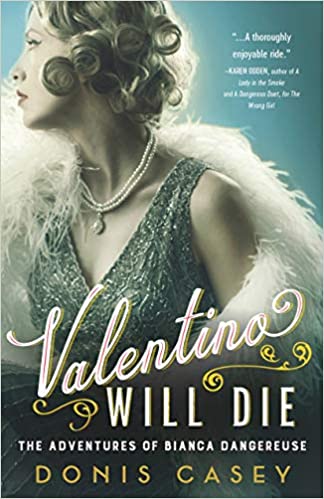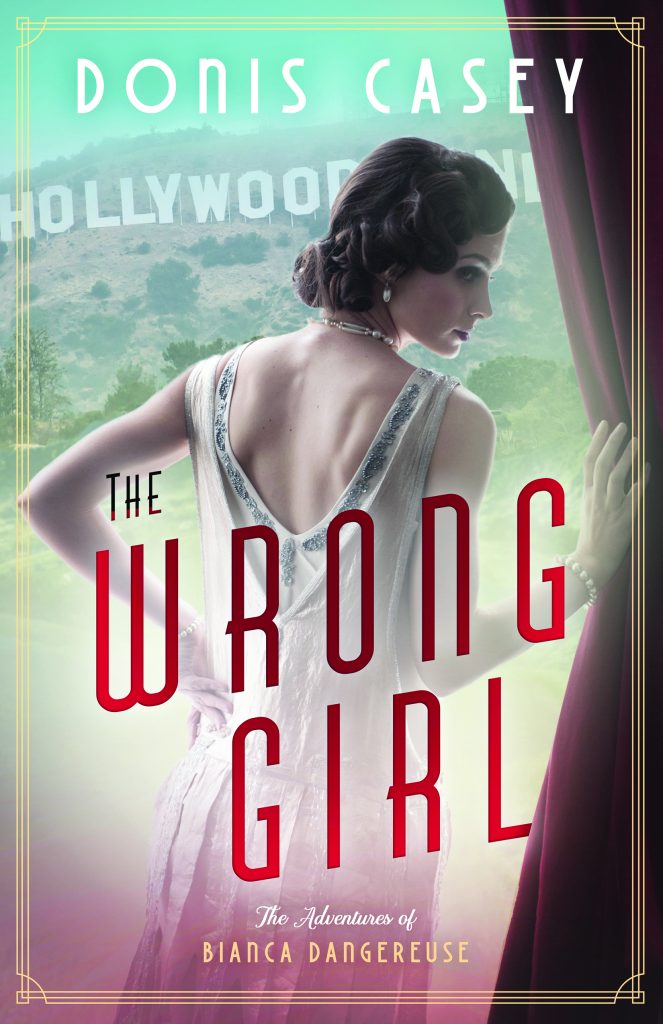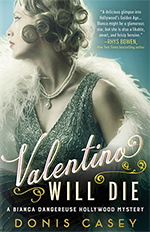
A couple of years ago, during the pandemic, I decided to try writing something entirely different from my Alafair Tucker historical mystery series, which is set in the 1910s in Oklahoma and features a middle-aged farm wife and mother of ten. I had written ten books in this series, spanning the years 1912 to 1919, and felt it was time to leave the farm for the lights of Hollywood in the Roaring Twenties.
So I spun off one of Alafair’s children and sent her to California to become a silent-screen movie star. Of course, she had plenty of trouble getting there. Sex trafficking, greed, murder … Hollywood had it all in the 1920s. I always immerse myself in historical research before I even begin writing, because if there’s anything I’ve discovered after writing 12 historical novels it’s that what really happened is infinitely more amazing that anything you could make up. You might think Chicago was the worst mob center in America at the time. You might be wrong.

In December of 1927, Al Capone treated his family to a Christmas vacation in Los Angeles. Some years earlier, Capone had sent one of his minions, “Handsome Johnny” Rosselli, to Hollywood to form relationships with movie industry movers and shakers, and develop “business opportunities” for the Chicago mob. Rosselli found plenty of opportunity, so Capone decided it was worth a personal visit to check it out for himself. Shortly after he arrived, he was paid a visit at his hotel by the Los Angeles chief of police, who told him he had twelve hours to get out of town. Al packed up and left.
The powers-that-were in Southern California didn’t want the Chicago Outfit sticking its nose into their business. They already had plenty of their own home-grown graft and weren’t interested in splitting the profits. Hollywood vice was already well organized by a group of local businessmen and corrupt elected officials who called themselves the Committee.
Hollywood and the movie industry didn’t start out as a den of vice. In fact, in the early days of cinema, at the dawn of the twentieth century, independent filmmakers left the East Coast and moved west specifically to get away from shake-down artists – namely Thomas Edison – who had no scruples about sending enforcers to smash the cameras of filmmakers who refused to pay exorbitant licensing fees. Once the independents reached California, they discovered a wide-open society and great weather, and set about making sleepy little Hollywood into a one-industry town.
Early Hollywood filmmakers were a Bohemian lot, artistic, experimental, and open minded. By the late 1910s, the movies had become big business, and some of the most successful screenwriters, directors, and producers of the time were women. Opportunity abounded for anybody who could deliver the goods. Studios could hardly make movies fast enough to meet the demand of thousands of theaters in big towns and small, all over the country. Money flowed like a tsunami into Hollywood. The small studios raked in the profits and quickly became big studios, run by extremely powerful, extremely rich men.
Lots of money equals lots of power. Power corrupts, they say, and absolute power … well, you know. And after Congress passed the 18th Amendment in 1919, Prohibition became not only the law, but a fantastic business opportunity. Movies were a gold mine, but the real money was to be made in the service industries – booze, drugs, gambling, and prostitution.
The Committee ran Capone out of town, but Handsome Johnny stayed on in Hollywood. He loved the movies, and was so good-looking he could work as an actor by day and bootlegger at night. Johnny went into business with a rum-runner named Tony “the Hat” Cornero. Tony Cornero wasn’t part of the Chicago or East Coast mobs. He was a local with an entrepreneurial streak and a shaky grip on morality. Tony owned a fleet of ships he used to haul whisky from Canada. In December of 1926, he was arrested at the Mexican border while trying to enter the US with a load of rum and was sentenced to two years in prison. While being transported to jail, Cornero escaped the guards and jumped off the train, finally making it to Europe, where he spent a few years in hiding. He returned voluntarily to the U.S. in 1929 to serve out his sentence. Upon his release in 1931, he got out of the liquor “importing” business and into even more profitable and equally illegal gambling. He opened a series of popular gambling ships anchored along the California coast, three miles offshore in international waters, outside of U.S. jurisdiction. Instead of using power boats to haul Canadian whiskey from his ships to buyers on shore, he now used them to ferry gamblers to his offshore casinos.
Off shore gambling boats, whiskey, and murder. Now there’s an idea for a book!



More Places to Go
Donis on Facebook
Type M for Murder